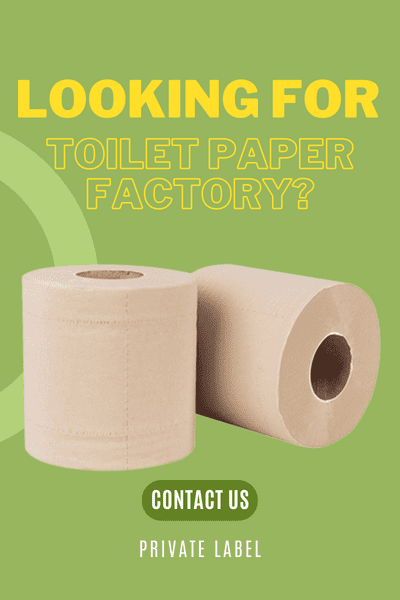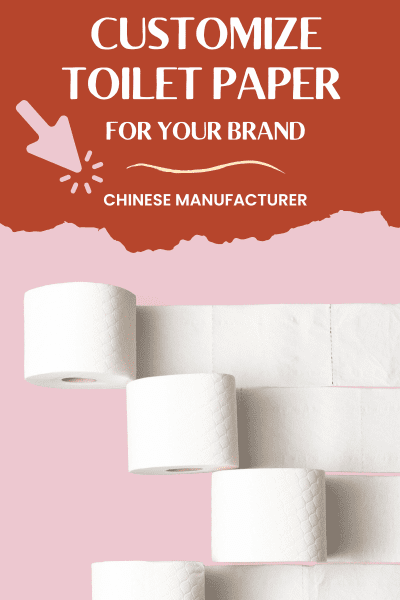What Is Toilet Paper Made Of?
Toilet paper is primarily made of pulp, with common types including wood pulp, recycled pulp, bamboo pulp, and hemp pulp. Each material has its own advantages and disadvantages, with bamboo and hemp being more eco-friendly options due to their sustainability and minimal environmental impact.
Discover the Materials of Toilet Paper and Find the Right TP for You
The main ingredients of toilet paper are fiber and water, though other additives may be included depending on the type of tissue. If you’re curious about the options out there, let’s explore some pulp-supported toilet paper varieties that are currently on the market.
Wood pulp toilet paper
Wood pulp toilet paper has been widely used globally for many years. It is made from wood fibers that have been processed and broken down into a soft material.
The primary advantage of using wood pulp toilet paper is its availability, which makes it affordable for individuals and companies alike. Wood pulp toilet paper also has a soft texture that makes for a comfortable and luxurious user experience.
On the other hand, there are some disadvantages to using wood pulp toilet paper. Firstly, the production process for this type of toilet paper requires a significant amount of water and energy, making it an environmentally unsustainable option. In addition, It is produced by cutting down trees, which can result in deforestation and habitat loss for wildlife. In order to make wood pulp toilet paper soft and white, bleach and wet strength agent are added in the production process, which is related to chronic health problems such as urinary tract infections and skin irritation.
Recycled Pulp Toilet Paper
Recycled pulp toilet paper is made from post-consumer waste materials like old newspapers, cardboard boxes, and other used materials.
Using recycled toilet paper reduces the amount of waste going to landfills and reduces the need for virgin wood pulp and reduces the carbon footprint. In addition, recycled toilet paper uses materials that have already been processed into paper, it is cheaper to produce than virgin wood pulp. Hence, it is more cost-effective than regular toilet paper.
Recycled pulp toilet paper is a great eco-friendly alternative, but it also has its drawbacks. The quality of recycled toilet paper is generally lower than that of regular toilet paper. The texture is less soft, and it may break down easily, making it less effective for cleaning. And be aware that recycled fibers are often bleached with more chemicals to make them white. Recycled toilet paper feels a little worse than ordinary paper rolls. It’s the perfect pick for those who value both price and sustainability.
Bamboo Pulp Toilet Paper
Bamboo pulp toilet paper is another eco-friendly alternative to wood pulp toilet paper. This type of toilet paper is made from bamboo fibers.
Bamboo is a fast-growing plant that can reach full maturity within five years, compared to twenty-five to thirty years for trees. Additionally, bamboo requires less water, pesticides, and fertilizers to grow, making it a more environmentally friendly option. Unlike recycled toilet paper, bamboo toilet paper is soft and gentle on sensitive skin. It’s also stronger than traditional toilet paper. The fibers of bamboo are naturally resistant to bacteria, making it a great option for people with allergies, sensitivities, or who are prone to infections.
Bamboo toilet paper is undoubtedly an excellent choice to meet our needs and contribute to environmental protection at the same time. The only downside? Bamboo toilet paper is a bit more expensive than your regular roll. But for those who value both comfort and sustainability, it’s undoubtedly an excellent choice.
Hemp Pulp Toilet Paper
Hemp toilet paper is a type of toilet paper that is made from the pulp of hemp plant fibers.
Similar to bamboo, hemp grows quickly and requires fewer resources than trees. Hemp is a versatile plant that can be grown without the use of harmful chemicals and pesticides, making it a more sustainable option than traditional toilet paper made from trees. Hemp toilet paper is also naturally softer and more durable, providing a longer-lasting product.
One of the main drawbacks of this eco-friendly alternative is it may be harder to find and more costly due to its production process and limited supply. It’s also important to note that some people may have allergies to hemp products, so it’s essential to do a patch test before switching to hemp toilet paper.
Sugarcane Pulp Toilet Paper
One of the recent innovations in this sector is sugarcane pulp toilet paper. Sugarcane pulp is a byproduct of the sugarcane industry and can be used to make toilet paper. Sugarcane pulp is one of the newest types of eco-friendly materials used in tissue products. This type of material comes from sugarcane stalks that have been processed and broken down into fibrous sheets that resemble tissue paper in texture and form.
This type of toilet paper is considered more sustainable than wood pulp toilet paper because it uses a waste product. While it may not be as soft or white as some other types of tissue products, sugarcane pulp is still a great choice for those looking for an environmentally friendly option with minimal environmental impact.
Toilet Paper of Other Materials
It is worth noting that toilet paper is not limited to traditional materials. Some innovative companies have experimented with using unconventional materials such as wheat straw, Kenaf, and even algae to create eco-friendly toilet paper. These alternative materials can offer a more sustainable and environmentally conscious alternative to traditional toilet paper materials. However, there are still challenges to overcome in terms of cost, scalability, and consumer acceptance
Learn About Chemicals Added to Toilet Papers
But pulp alone doesn’t make for very soft or absorbent toilet paper. To make it softer, manufacturers will add a variety of different materials.
A common ingredient in toilet paper is something called “wet strength resin.” This is a substance that helps the paper hold together when it’s wet, which is important for things like flushable wipes and moistened toilet paper. Many manufacturers may fortify their products with chlorine bleach or dyes in order to achieve brighter colors or longer shelf-life when stored at room temperature.
In addition to these main components, other materials may also be included in the manufacturing process depending on the specific brand and product type being made. For example, some manufacturers add additional ingredients like lotion or aloe vera gel in order to create a softer texture or provide an extra layer of skincare benefits. Some manufacturers will also add fragrances or dyes for aesthetic appeal and meet the needs of some people.
To wrap up, it is worth learning more about the materials used to make toilet paper so you can make an informed choice as well as identify whether a certain roll aligns with your values and preferences. Think about factors like accessibility, sustainability, affordability, and personal experience when browsing for toilet paper if you want to select something that best suits you and your household. While it may seem insignificant now, making changes in your everyday life – such as switching to eco-friendly products – is the best way to protect our environment in the long run. Taking the time to assess what rolls target key criteria of yours will prove invaluable in the future, benefiting both our planet and your wallet alike.
FAQ:
1.What is the most common material used to make toilet paper?
The most common material used to make toilet paper is wood pulp, derived from trees. It is widely used due to its availability and affordability, though it has environmental impacts due to deforestation.
2.Is bamboo pulp toilet paper better for the environment?
Yes, bamboo pulp toilet paper is considered more eco-friendly because bamboo is a fast-growing plant that requires less water and fewer pesticides compared to trees. It’s also biodegradable and gentler on sensitive skin.
3.What are the benefits of using recycled pulp toilet paper?
Recycled pulp toilet paper is made from post-consumer waste like newspapers and cardboard. It helps reduce waste in landfills and decreases the need for virgin wood pulp, making it a more sustainable and cost-effective option.
4.Is hemp pulp toilet paper a good alternative?
Hemp pulp toilet paper is a great eco-friendly alternative, as hemp grows quickly and without harmful chemicals. It is also softer and more durable than some other materials, although it may be harder to find and more expensive.
5.What chemicals are used in toilet paper production?
Some toilet paper products include chemicals such as wet strength resins, bleach, and dyes to improve durability, whiteness, and texture. However, excessive use of bleach can be harmful to both health and the environment.
6.What other alternative materials are used to make toilet paper?
Other eco-friendly alternatives to traditional toilet paper include sugarcane pulp, wheat straw, kenaf, and even algae. These materials aim to reduce environmental impact, but they are still not as widely available or mainstream as wood or bamboo pulp.




